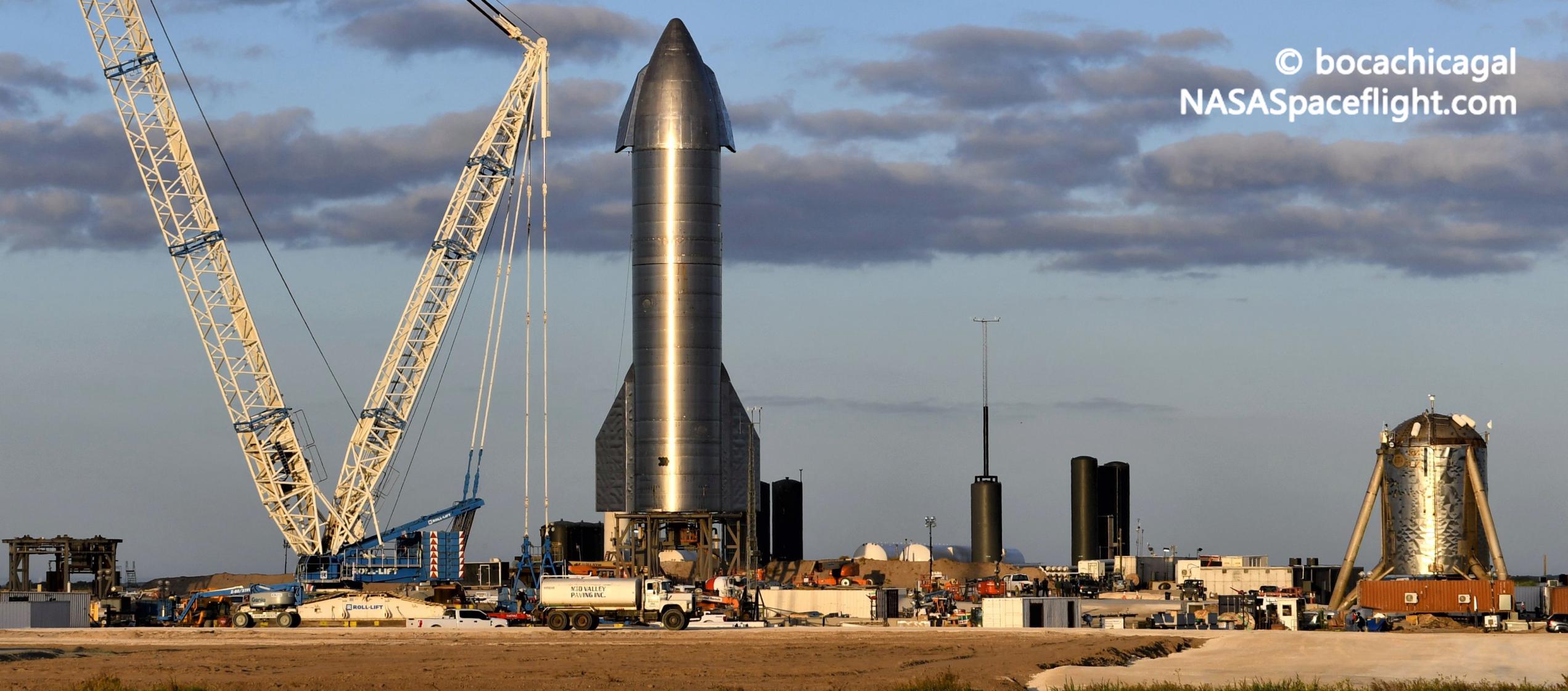

News
SpaceX’s high-altitude Starship launch debut unlikely before Crew-1
Update: SpaceX canceled its November 5th and 6th Starship SN8 static fire test windows on Thursday, delaying the next Starship test window to November 9th unless additional testing is scheduled on the 7th and 8th.
As previously discussed, SpaceX requested three road closures for “Starship SN8 Static Fire and 15KM Flight” attempts on November 9th, 10th, and 11th on Wednesday. With recent cancellations, NASASpaceflight reporter Michael Baylor says that the odds that Starship SN8 will be ready to fly before SpaceX’s Crew-1 operational NASA astronaut launch debut (NET November 14th) are now minuscule, further indicating that each of the three upcoming test windows will be dedicated to one or more Raptor static fires.
Stay tuned for updates as SpaceX continues to prepare Starship for its most ambitious, challenging, and risky test yet.
In the form of road closure filings, SpaceX has effectively announced the first possible dates for Starship’s high-altitude launch debut, a high-risk test that CEO Elon Musk recently made clear could fail.
Per road closures published on SpaceX’s dedicated Cameron County, Texas page, Starship serial number 8 (SN8) could apparently be ready for its historic launch debut as soon as November 9th in a 12-hour window that opens at 9am CST (15:00 UTC). Identical 9am-9pm windows on November 10th and 11th will serve as backups in the event of one or several launch aborts or delays – fairly likely for a prototype as complex as Starship SN8.
However, several tests stand between SN8 and flight-readiness, further increasing the odds of delays as SpaceX continues to work out the kinks in what amounts to the first fully-assembly, functional Starship.
Musk has already stated that Starship SN8 will need to complete another Raptor static fire test – potentially with one, two, or three engines – before SpaceX will consider the rocket ready for its flight debut. Over the last few days, NASASpaceflight.com reporter Michael Baylor has noted on livestreams that multiple more static fire tests are actually in order before SpaceX will attempt to launch Starship SN8. It’s currently unclear what the purpose of those additional static fire tests is, given that SN8 has already completed a triple-engine Raptor static fire.
In the two weeks since that milestone, however, SpaceX did take a major step forward, mating Starship SN8’s nose section to create what is effectively the first full-scale, functional prototype. Aside from two smaller forward flaps and attitude control system (ACS) cold gas thrusters, that nose section also contains a small secondary liquid oxygen tank known as a header tank – meant to store a small amount of highly pressurized propellant to be used during Raptor reentry and landing burns. Several months back, Musk revealed that Starship SN4 completed a static fire while only feeding on fuel (liquid methane) stored in the rocket’s methane header tank, making it reasonable to assume that SpaceX wants to repeat a similar test with SN8 while using both fuel and oxidizer header tanks.
For Starship SN8, those header tanks will be an irreplaceable necessity during the rocket’s first attempted launch, free-fall, flip maneuver, and landing. In a clear sign of preparation for a header-tank-only static fire test, SpaceX appeared to successfully complete a cryogenic proof of Starship SN8’s newly-installed nose section and nose (LOx) header tank on November 3rd, verifying that liquid nitrogen – standing in for LOx – can be pumped more than 50 meters (~165 ft) from Starship’s launch mount to the tip of its nose to load said tank.


SpaceX has one more “SN8 nose cone cryo proof” test window scheduled from 8am to 5pm CST Thursday, November 5th that could be used for one or more of those expected static fire tests. Otherwise, SpaceX’s Starship SN18 15 km (~50,000 ft) launch closures were technically filed for an “SN8 Static Fire and 15 KM Flight,” allowing SpaceX to perform one or several static fires before attempting to launch. All things considered, the odds that Starship SN8 will launch on time between November 9th and 11th are probably less than 50:50, but there is definitely a chance.
Elon Musk
Elon Musk confirms Grok 4 launch on July 9 with livestream event
The rollout will be accompanied by a livestream at 8 p.m. Pacific Time.
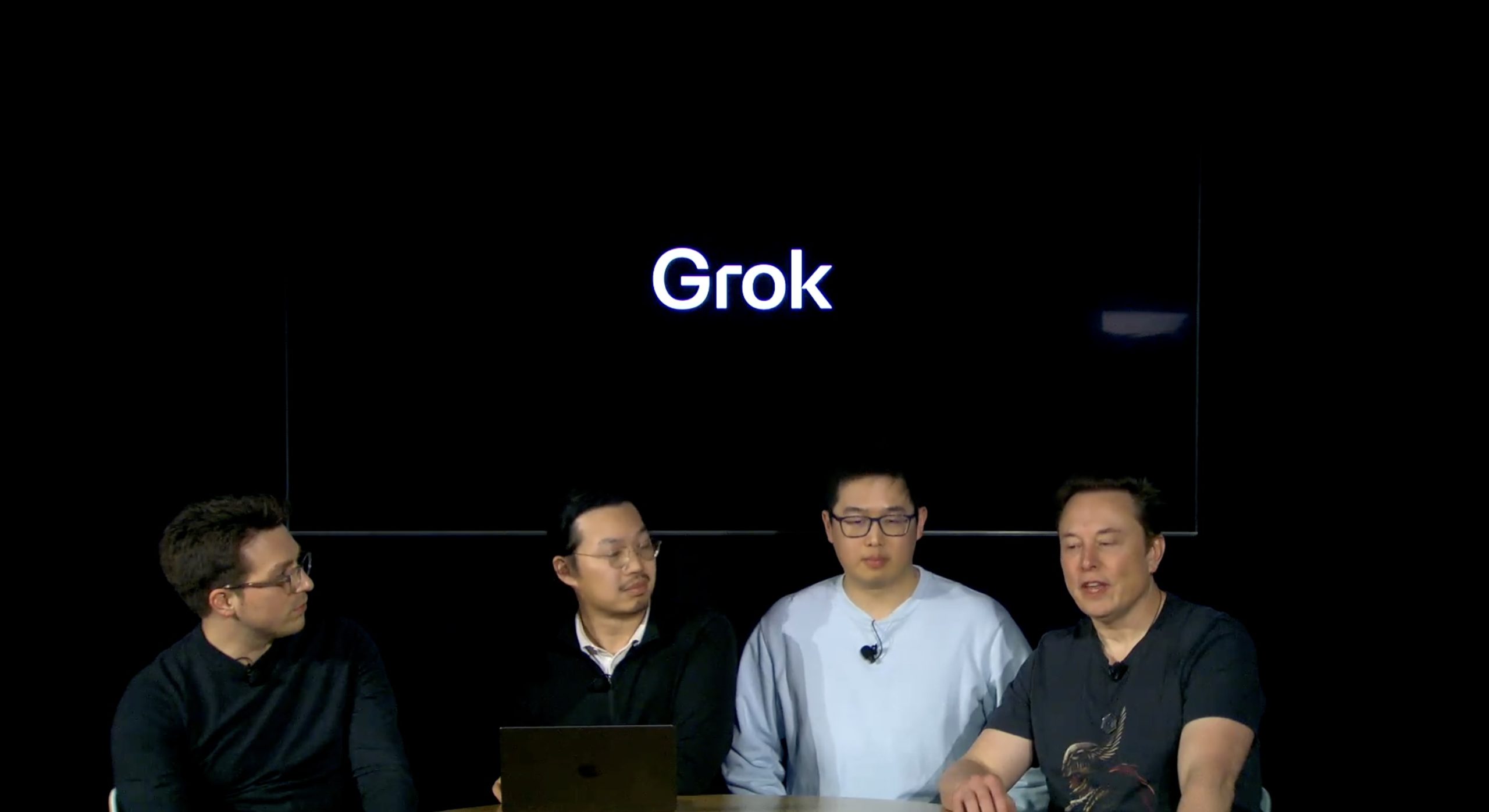
Elon Musk has officially confirmed that Grok 4, the latest version of xAI’s large language model, will launch on July 9. The rollout will be accompanied by a livestream at 8 p.m. Pacific Time, hosted on xAI’s official account on X.
xAI goes straight to Grok 4
Back in May, leaks indicated that xAI was getting ready to ship Grok 3.5. Considering Musk’s recent comments, however, it appears that the artificial intelligence startup would be focusing on the large language model’s fourth iteration instead. As noted in a Financial Express report, users on X have sighted references to Grok 4 in the lead up to the update’s launch, such as “grok-4-prod-mimic” and “Grok 4 Code.”
Musk’s Grok 4 announcement comes as AI competition intensifies between major players including OpenAI, Google, and xAI. With Musk’s Colossus supercomputer fully operational in Memphis, xAI appears to be accelerating its AI product roadmap.
Musk pushes Grok toward political neutrality
Grok 4’s launch also follows a recent controversy involving political bias, as noted in a CNN report. Last week, Grok responded to a user on X stating that political violence in the U.S. since 2016 had come more from the political right than the left. The chatbot noted in a later reply that its answer was based on information from sources like Reuters, the Journal of Democracy, and University of Maryland studies.
Musk stated that Grok’s response was a “major fail.” “Major fail, as this is objectively false. Grok is parroting legacy media. Working on it,” he wrote in a post on X. By the end of June, Musk noted that he was “grinding all night with the xAI team” and that they were making “good progress.” He also stated that the model “Will be called Grok 4. Release just after July 4th. Needs one more big run for a specialized coding model.”
News
Tesla opens massive solar Supercharger station in California
The Supercharger opened to customers ahead of Fourth of July weekend, while Tesla continues phase two of construction on the site.
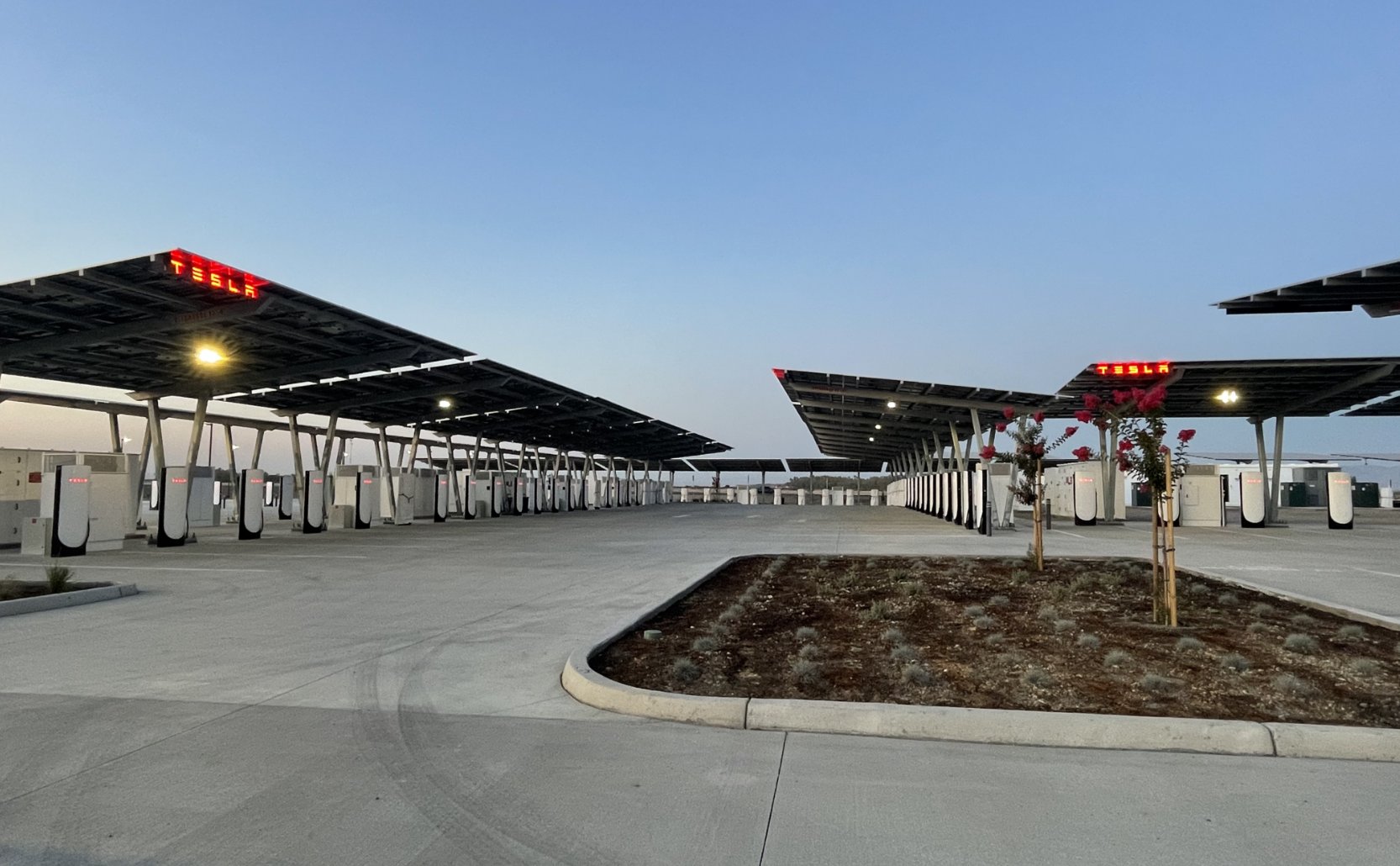
Tesla has officially launched the first several Supercharging posts at a massive station in California, notably including solar canopies and grid-scale batteries to offer completely renewable charging.
Last week, Tesla announced on X that it opened the first 84 Supercharger stalls of a planned 168-stall station in Lost Hills, California. Additionally, the massive Supercharger project features 11MW of solar canopies and 10 Megapack batteries for off-grid charging powered entirely by solar energy.
Tesla completed the first phase of the project just days ahead of the busy Fourth of July holiday weekend, adding that initial construction took just eight months. In addition to the remaining charging stalls, Tesla says it’s building a set of lounge areas, renderings of which can be seen below alongside current photos of the site.
Notably, the site also includes V4 charging posts for the company’s latest available charging speeds, and it’s located near the busy junction between I-5 and Highway 46 in Kern County.
“Thank you [Kern County] and [PG&E] for collaboration and approvals,” Tesla wrote in a follow-up post.

Credit: Tesla Charging | X
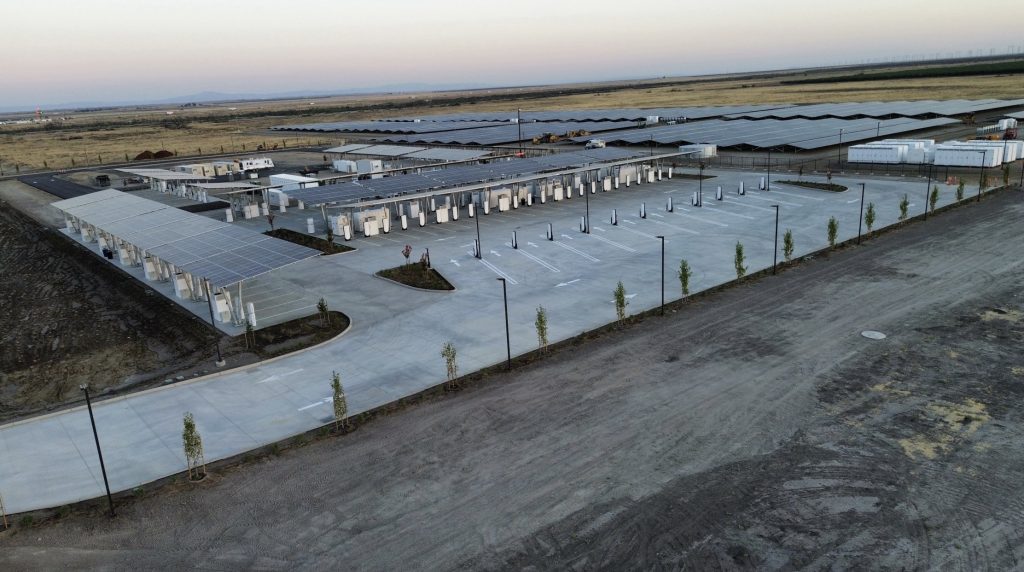
Credit: Tesla Charging | X

Credit: Tesla Charging | X

Credit: Tesla Charging | X
Tesla Supercharger Maps for North America, Europe, and Asia pic.twitter.com/0U5r0XRPyo
— TESLARATI (@Teslarati) July 2, 2025
READ MORE ON TESLA SUPERCHARGERS: Tesla launches ultra-fast V4 Superchargers in China for the first time
Testing at the LA Diner, plus Musk update on potential Tesla solar Gigafactory
The huge Tesla Supercharger station completed phase one of construction fairly quickly, especially given how long Tesla has been working on its unique Los Angeles diner, drive-in, and Supercharger location. Still, the company was seen performing some testing at the nearly-completed charging station earlier this month, and will reportedly be holding a job fair.
Elon Musk also responded on Monday morning to a post on X, suggesting that Tesla is “thinking about” building a U.S.-based solar Gigafactory in order to help support increased power needs with AI growth, and to bolster domestic solar production.
Tesla is building a new UFO-inspired Supercharger in the heart of Alien country
News
Tesla driver walks away from major accident with minor injuries
The driver sustained only minor injuries, and the exact cause of the crash remains under investigation.
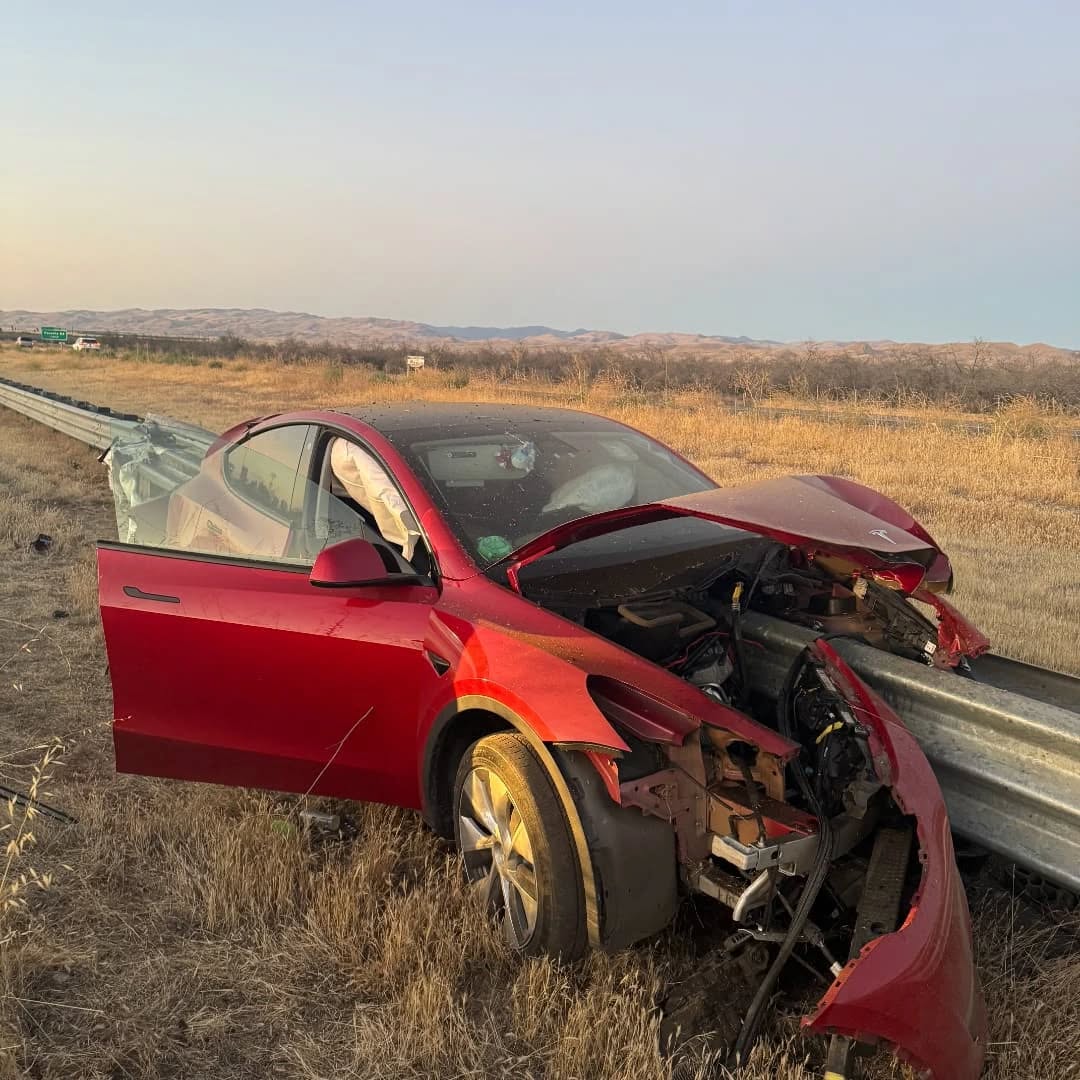
The driver of a Tesla Model Y survived and walked away from a harrowing accident on Monday in California, only sustaining minor injuries despite the vehicle being impaled by a guardrail.
On Monday morning around 4:34 a.m., the Los Banos division of the California Highway Patrol (CHP) responded to the accident on I-5 near Panoche Road, involving a 23-year-old in a Tesla Model Y. According to a post on social media, the driver veered off the road for unknown reasons in the northbound lane, before crashing directly into the guardrail and impaling the vehicle.
You can read the full message and photos from Los Banos CHP below, as were shared in a Facebook post on Monday afternoon.
This morning a Tesla model y was traveling in the #1 northbound lane of I-5 north of Panoche Rd. For unknown reasons driver allowed V-1 to veer off the roadway, travel through a dirt center divide, and crashed into the fixed metal guardrail. Lucky for the driver he only sustained minor injuries and was able to walk away. Driving a vehicle requires 100% attention to the road. Avoid distractions and focus on driving.

Credit: CHP Los Banos (via Facebook)
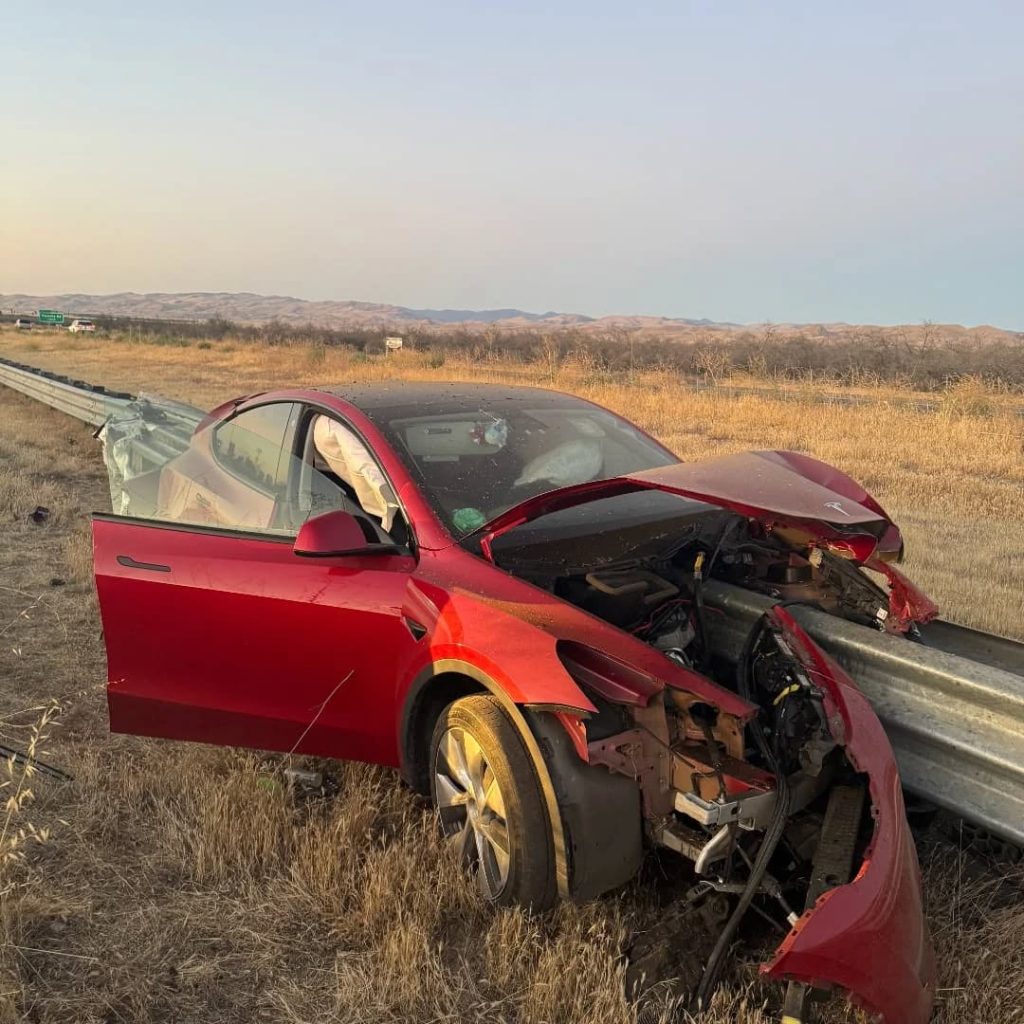
Credit: CHP Los Banos (via Facebook)
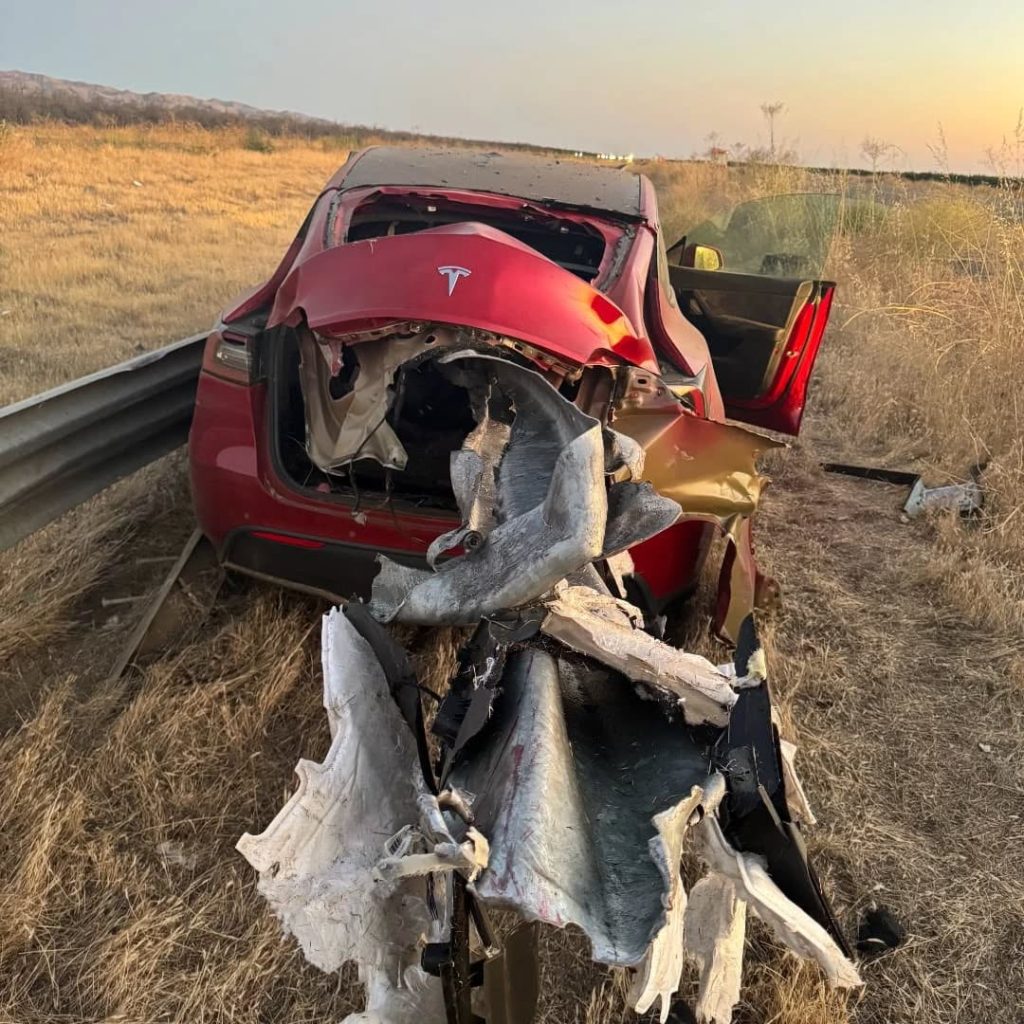
Credit: CHP Los Banos (via Facebook)
In a statement to SFGate, CHP officer Myles Anderson said that the driver only sustained minor injuries, while no arrests are made and drugs and alcohol are not suspected to have been involved. The report also notes that Tesla’s “cruise control and lane assistance features” were activated, according to Anderson. However, it’s not entirely clear if this is referring to Supervised Full Self-Driving (FSD), or to the cruise control and lane assist features baked into Autopilot.
At the time of writing, CHP has not yet responded to Teslarati’s request for clarification and additional details on the matter.
Tesla Crash Safety Ratings across its lineup: pic.twitter.com/ny30R7ceji
— TESLARATI (@Teslarati) July 1, 2025
READ MORE ON TESLA SAFETY: Tesla rolls out crucial new safety feature aimed at saving children
The news comes after Tesla has touted its vehicles as incredibly safe for many years. In December, for example, the company highlighted receiving top safety scores from regulators on four different continents throughout the world, including from the National Highway Traffic Safety Administration (NHTSA) and the Insurance Institute of Highway Safety (IIHS) in the U.S.
Tesla has also listed the goal of making its vehicles the safest on the road throughout the years, both in the overall design of its vehicles and in its Autopilot and Full Self-Driving (FSD) programs.
Tesla Model 3 ranks as the safest new car in Europe for 2025, per Euro NCAP tests
-

 Elon Musk1 week ago
Elon Musk1 week agoTesla investors will be shocked by Jim Cramer’s latest assessment
-

 News2 weeks ago
News2 weeks agoTesla Robotaxi’s biggest challenge seems to be this one thing
-

 News2 weeks ago
News2 weeks agoWatch the first true Tesla Robotaxi intervention by safety monitor
-

 Elon Musk2 weeks ago
Elon Musk2 weeks agoA Tesla just delivered itself to a customer autonomously, Elon Musk confirms
-

 News2 weeks ago
News2 weeks agoTesla Robotaxi rollout proves that Elon Musk still delivers, even if it’s late
-

 Elon Musk2 weeks ago
Elon Musk2 weeks agoxAI welcomes Memphis pollution results, environmental groups push back
-

 Elon Musk2 weeks ago
Elon Musk2 weeks agoElon Musk commends Tesla team on successful Robotaxi launch
-

 Elon Musk2 weeks ago
Elon Musk2 weeks agoElon Musk confirms Tesla Optimus V3 already uses Grok voice AI


















